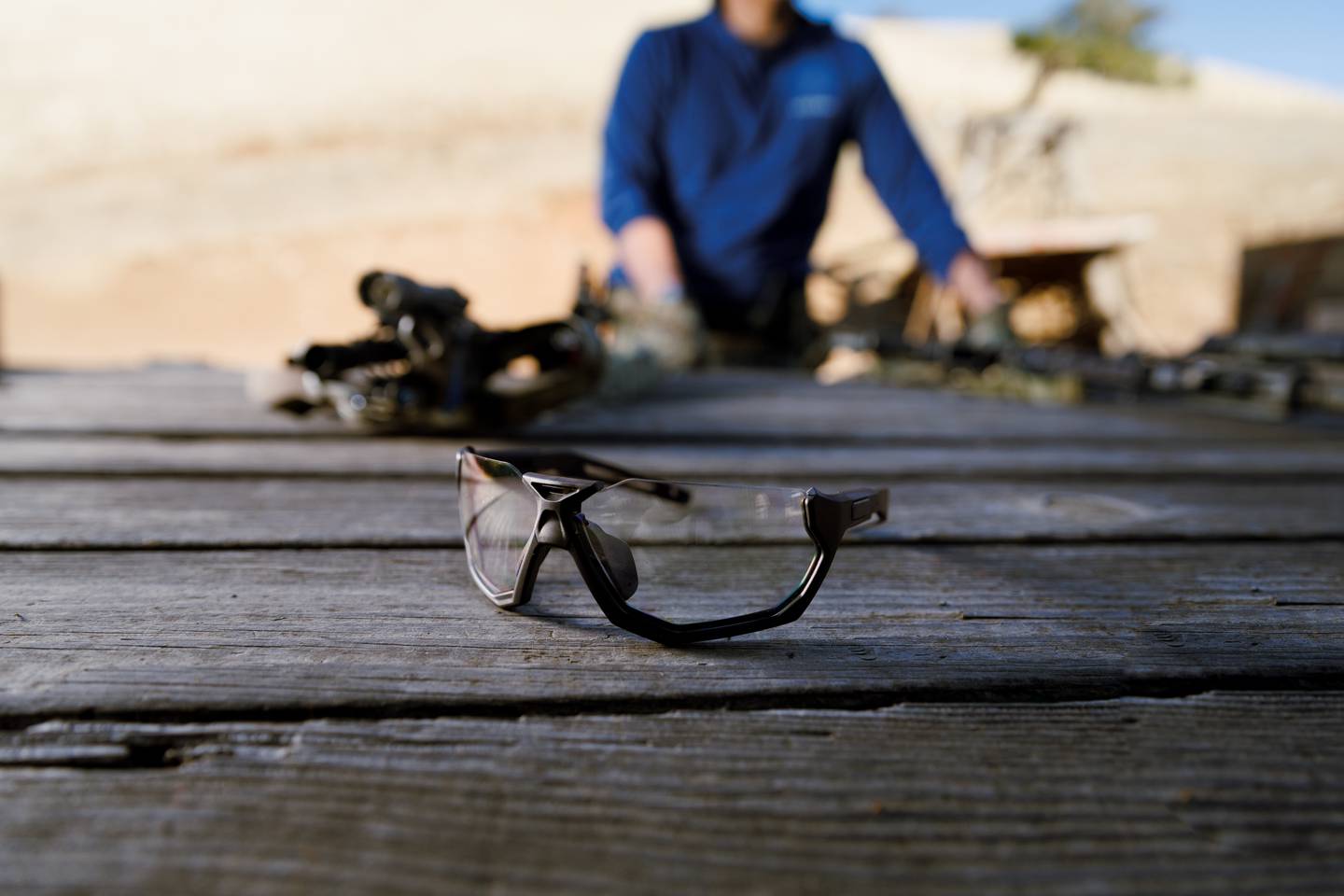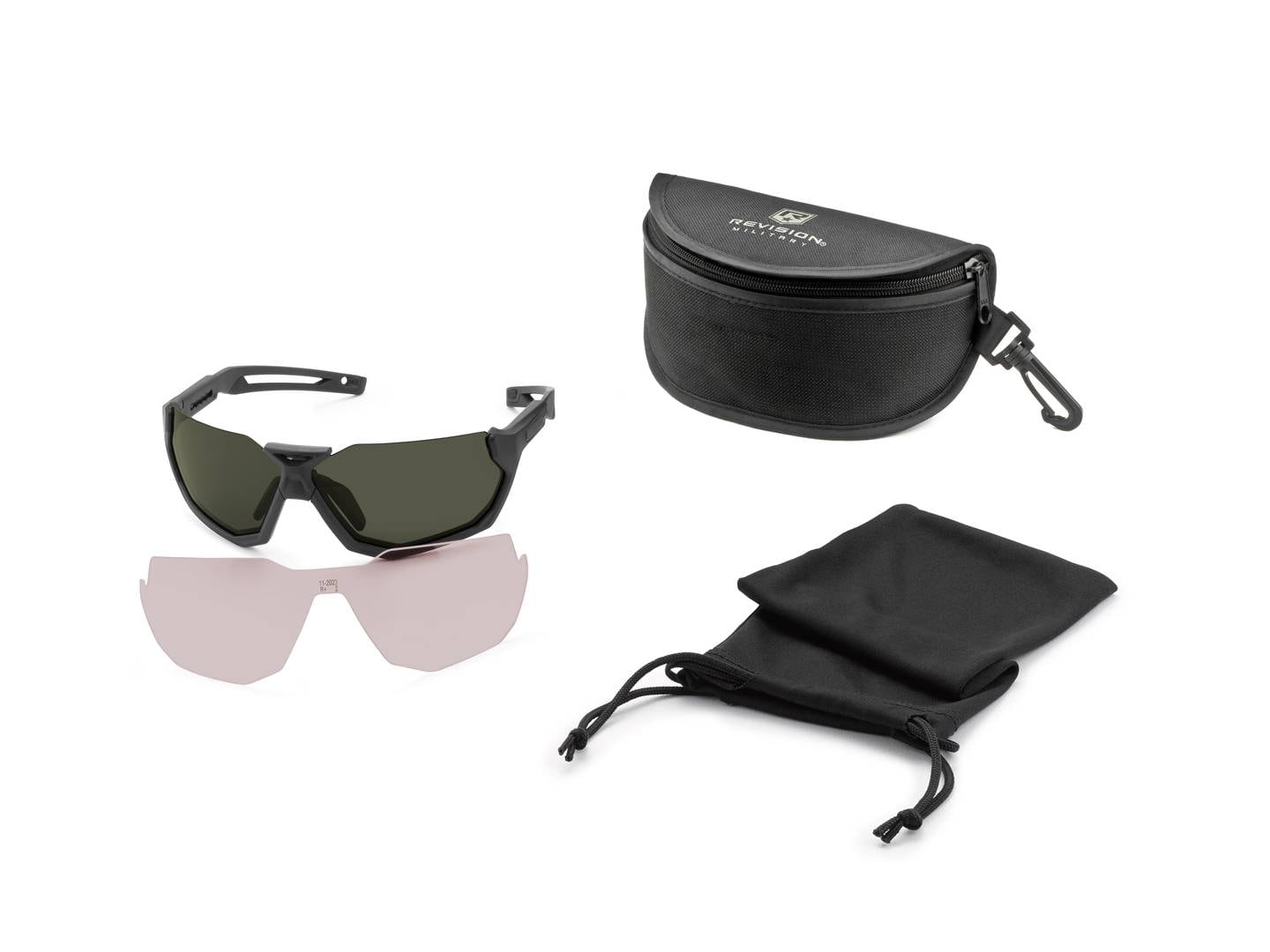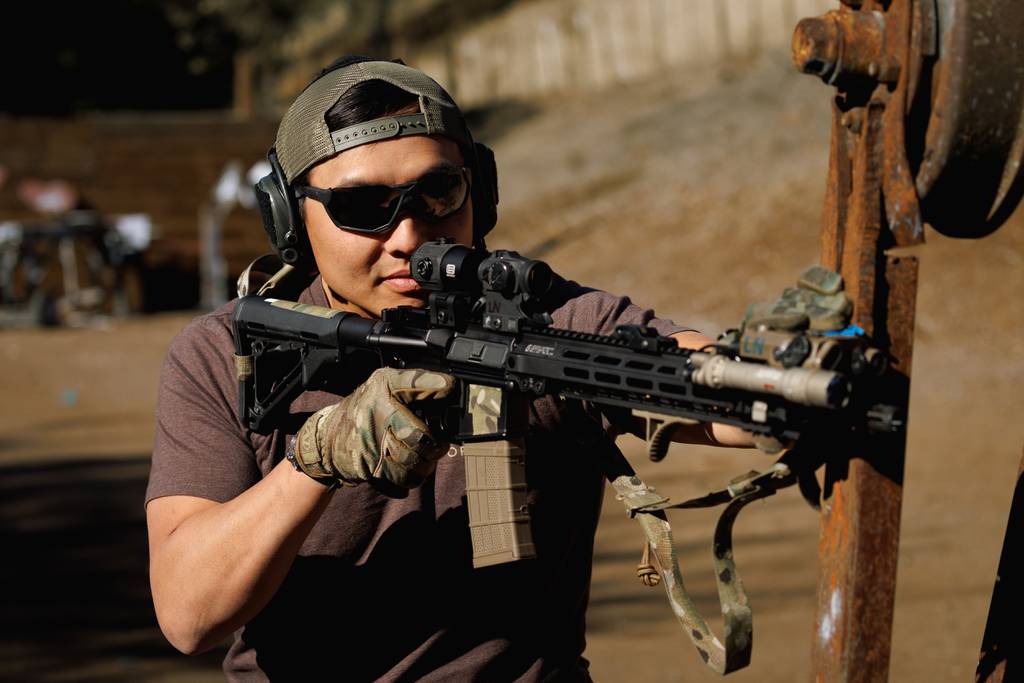LAS VEGAS — A brand new design from a company that already provides eyewear to the U.S. military gives users ballistic and laser eye protection and potential tactical advantage.
The SlingShot Ballistic Sunglasses by Revision are the latest eyewear designed specifically for military and law enforcement personnel.
Revision is one of only four eyewear companies with products on the Authorized Protective Eyewear List. The other three are Oakley, Wiley X and Eye Safety Systems, or ESS.
The list is controlled by the Army’s Program Executive Office-Soldier but covers ballistic eye protection for all the services. The company is preparing to submit the Revision SlingShot to PEO Soldier for a potential addition to the authorized list.
Andrew Stiles, Revision’s business developer and a retired Navy E2-C Hawkeye pilot, told Military Times that the company looked at one of its current designs, the Stinger Hawk, and sought ways to improve it for users.

The most obvious change is a “browless” frame that removes the top part of the frame from the design.
The move helps with three areas.
First, Stiles said, it makes changing out lenses much quicker. Most military eyewear comes with at least two options, a tinted and clear lens, for daytime and low-light or nighttime use.
Second, the brow bar on sunglasses can trap heat, fogging the lens. Without the bar, heat can dissipate quicker, clearing any residual fog or moisture for a better view.
But the third area that helps may be the most tactically advantageous.
“In stressful situations or using gun optics you lower your head,” Stiles said.
What that means is if they’re using eyewear, they’re often looking through the top of the lens.
“So where do you want your frame?” he said.
With no brow bar, there’s less obstructing the user’s view, Stiles said.
A newer feature to the Revision eyewear line offers another potential tactical advantage due to the use of their registered trademark technology I-VIS.
The company used artificial intelligence paired with photographs of a wide range of terrain and colors to match lens and color technology with the natural environment.

Historically, ballistic eyewear makers used clear, tinted, yellow or amber lenses. Over time, Stiles said, users found the single-dye, monochrome lenses reduced the amount of color hues a user could see.
That has a way of “flattening” the colors in a jungle or desert scene.
But, Stiles said, with better lens technology the circle of color hues a user can see widens, adding more detail to their vision.
“We can expand that and that gives you access to more hues,” Stiles said. “Being able to see more hues promotes a high contrast that gives you an increased depth of field.”
For military use that means target acquisition and noticing subtle changes in the environment.
One final change in the SlingShot is an optional “thin arm” that users can swap out on the eyewear when wearing communications headsets.
Though the currently fielded sunglasses do fit with existing communications gear, the slimmer arm, about half the width of the existing options, could streamline the fit.
*CORRECTION: This article has been updated to reflect that Revision is preparing to submit the SlingShot sunglasses to the Army’s Program Executive Office-Soldier authorized protective eyewear list.
Todd South has written about crime, courts, government and the military for multiple publications since 2004 and was named a 2014 Pulitzer finalist for a co-written project on witness intimidation. Todd is a Marine veteran of the Iraq War.








